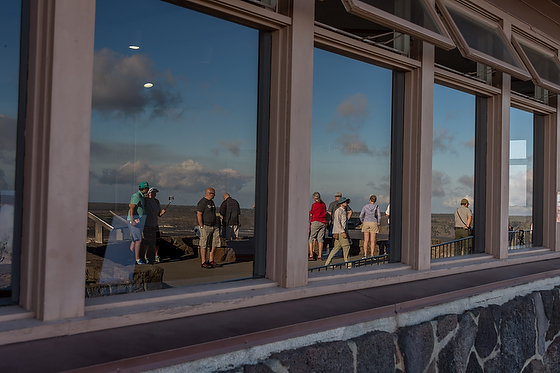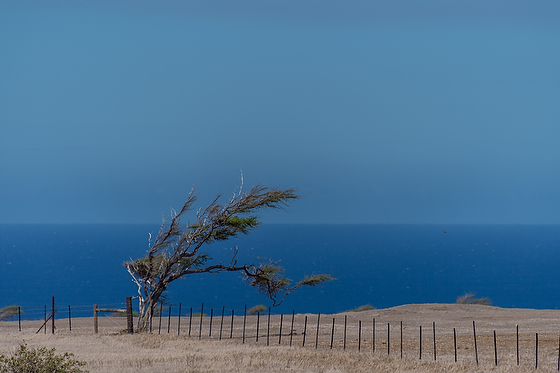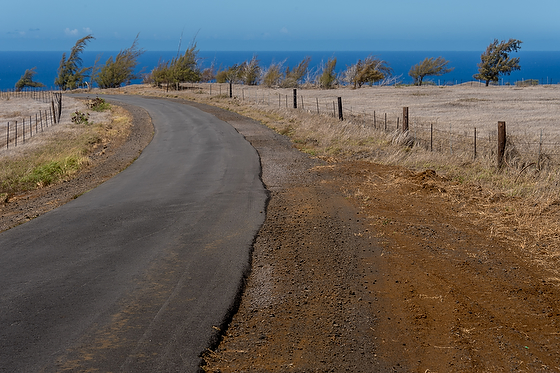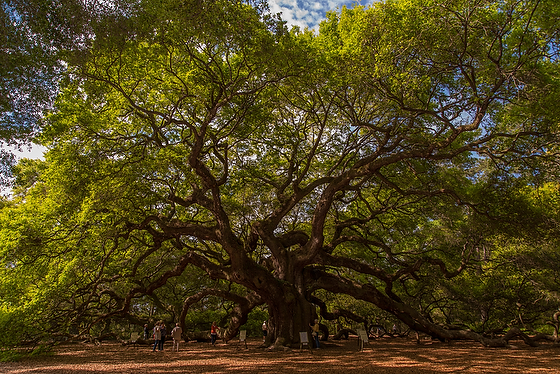 |
| Nikon D5, AF-S NIKKOR 28-300mm f/3.5-5.6G ED VR, ISO 280, ƒ/8, 1/100 |
When I teach students photography, multimedia and/or storytelling I often find myself reflecting over the content.
 |
| Nikon D5, AF-S NIKKOR 28-300mm f/3.5-5.6G ED VR, ISO 100, ƒ/5.6, 1/1250 |
When I was down at South Point on The Big Island of Hawaii you see how all the trees are bent in one direction.
 |
| Nikon D5, AF-S NIKKOR 28-300mm f/3.5-5.6G ED VR, ISO 100, ƒ/10, 1/200 |
When I say all the trees I really mean all the trees are bent from a constant wind. The wind is so constant and good that they put windmills here for wind power.
 |
| Nikon D5, AF-S NIKKOR 28-300mm f/3.5-5.6G ED VR, ISO 100, ƒ/7.1, 1/800 |
While this strong wind is great it will affect the landscape. Well when I teach I am trying really hard to not make so much of an impression it looks like my students are too over powered.
Some of the things we discussed today was interviewing techniques. Now when I taught with my friends Jeff Raymond and James Dockery we compiled a list of tips that we give to the students. Here is that list plus some that I have added this week:
INTERVIEWING
TECHNIQUES
- Remember the audience doesn't know the question from the interviewer if they are not recorded or on camera. Remind the subject to phrase their answer so that the question is understood in their answer, sometimes by repeating the question.
- Write down at least 5 good questions beforehand
- Listen to their
responses and be ready to deviate from your list
- Listen as if you only
hear their words, not the question you asked
- Ask open-ended questions
- Ask questions that
CAN'T be answered with a 'yes' or 'no'
- Ask "how" and "why" questions
- If the person speaks
in the abstract, ask "Can you give me an example of that?"
- Dig for anecdotes and details
- Ask the person to
tell you exactly what happened moment by moment
- Ask specific details
along the way.
- Understand them and their story
- Try to see the world
through their eyes
- Remember, it's not
your story. Get their story right.
- Ask your questions then be quiet. Use silence and don't be afraid of it. No noises to affirm them. Affirm with gestures. Your noises will distract from the sound quality.
- Don't finish their
sentences.
- Be a good listener.
Sit quietly as they wrestle with what they are trying to say.
- Coach the person to speak with the passion they feel about the subject.
- Can you say that again, but with more feeling?
- Remember they may be pretty up tight in front of the camera and need to not just relax but bring the emotion through their voice.
- Get the basic details right
- Get the spelling of
their name (business card, or have them write it down).
- Clarify
- If something they
said didn't make sense, ask for clarification.
- Review your footage
while you're still overseas, where follow-up is much easier than after you go
home.
- Get to know your subject before interviewing them. This will not just help them be more relaxed but help you know how to interview them and perhaps help them relax.
- You can do the interview at the end of the coverage and not the beginning. I find it is easier to have someone sum up what we saw today than have them talk about a lot of stuff that by the end of the day I never caught on camera. This helps you from lacking in b-roll or images.
- Ask the subject to summarize what you have seen that day. While you may not use all of this, it will help you with a starting place for the narrative.
- Mirror them. Keep them going by nodding and smiling.
- Keep them on topic. If you have two or more interviews in your package planned, then each person needs to know what they are covering. Sometimes I break it down as to let one person tell me why something happened and the other to explain what they did to make it happen.
- Help them revise their comments. Often i need about 30 to 45 seconds of comments and a person may talk for more than 5 minutes. If I were to edit it later their will not be a good flow. I try and help them summarize what they just said or even edit. When I say edit--I mean cutting content.
- Get variety. I like to often record a longer comment and then follow up with them making it really short. Sometimes I use the longer comment. Get another direction just in case. After doing this for a few minutes often this gets their minds engaged and they find a new way to articulate themselves. Allow for this to happen.
Now just remember that you don't need them to tell you everything in words. You will help communicate a good part of what they do also with visuals that you will capture and use as b-roll. You need get them to tell you the things that the visuals don't convey. While you have a visual that shows something happening, it often doesn't help the audience know why.
If you do a good job interviewing then the story will be unique the branches of the story can be like Angel Oak Park on Johns Island near Charleston, South Carolina. Angel Oak is estimated to be 500 years old. The character of the subject will shine through and be who they really are rather than all the wind forcing it's power on the tree.
 |
| Nikon D750, AF-S NIKKOR 14-24mm f/2.8G ED, ISO 400, ƒ/8, 1/250 |






No comments:
Post a Comment